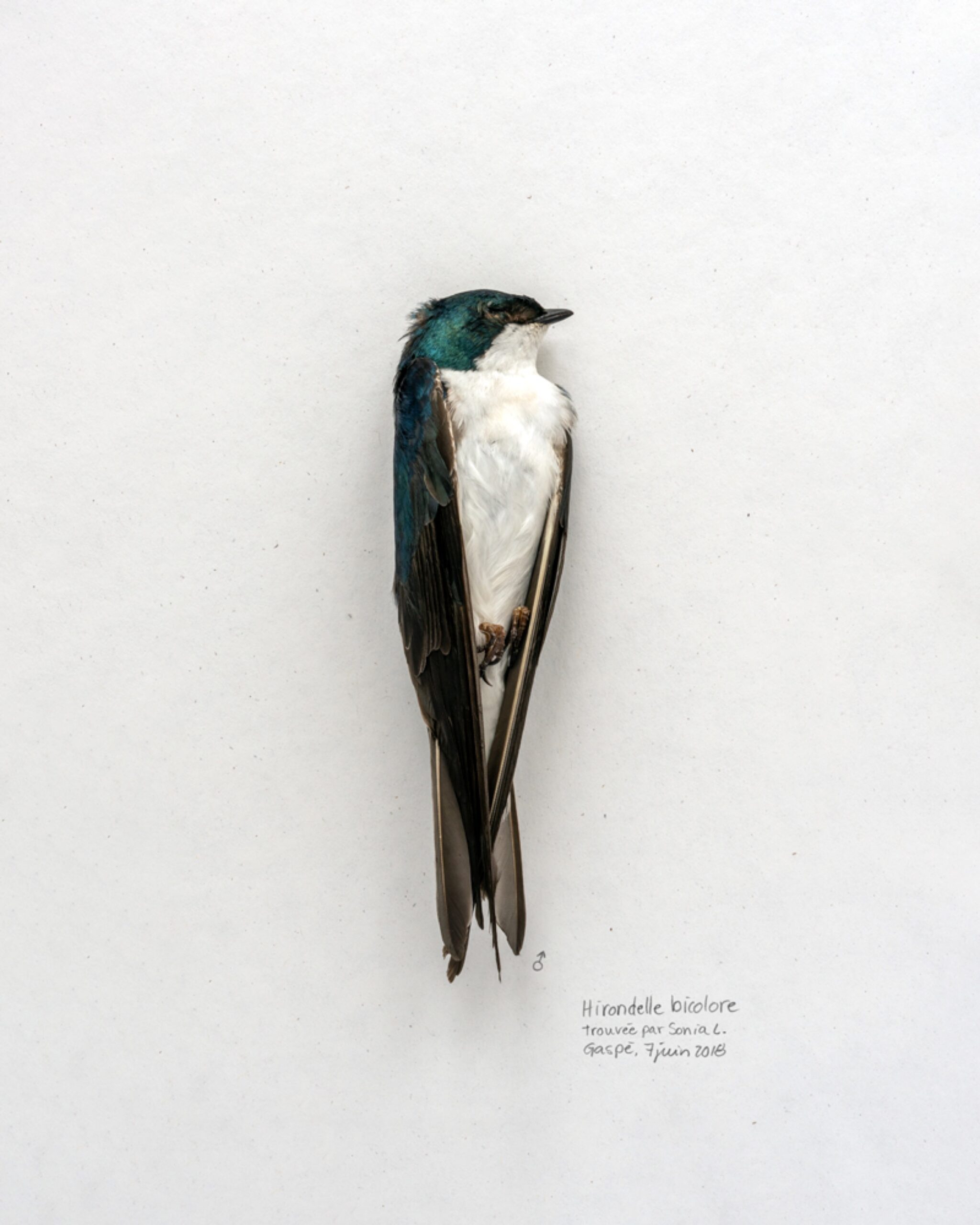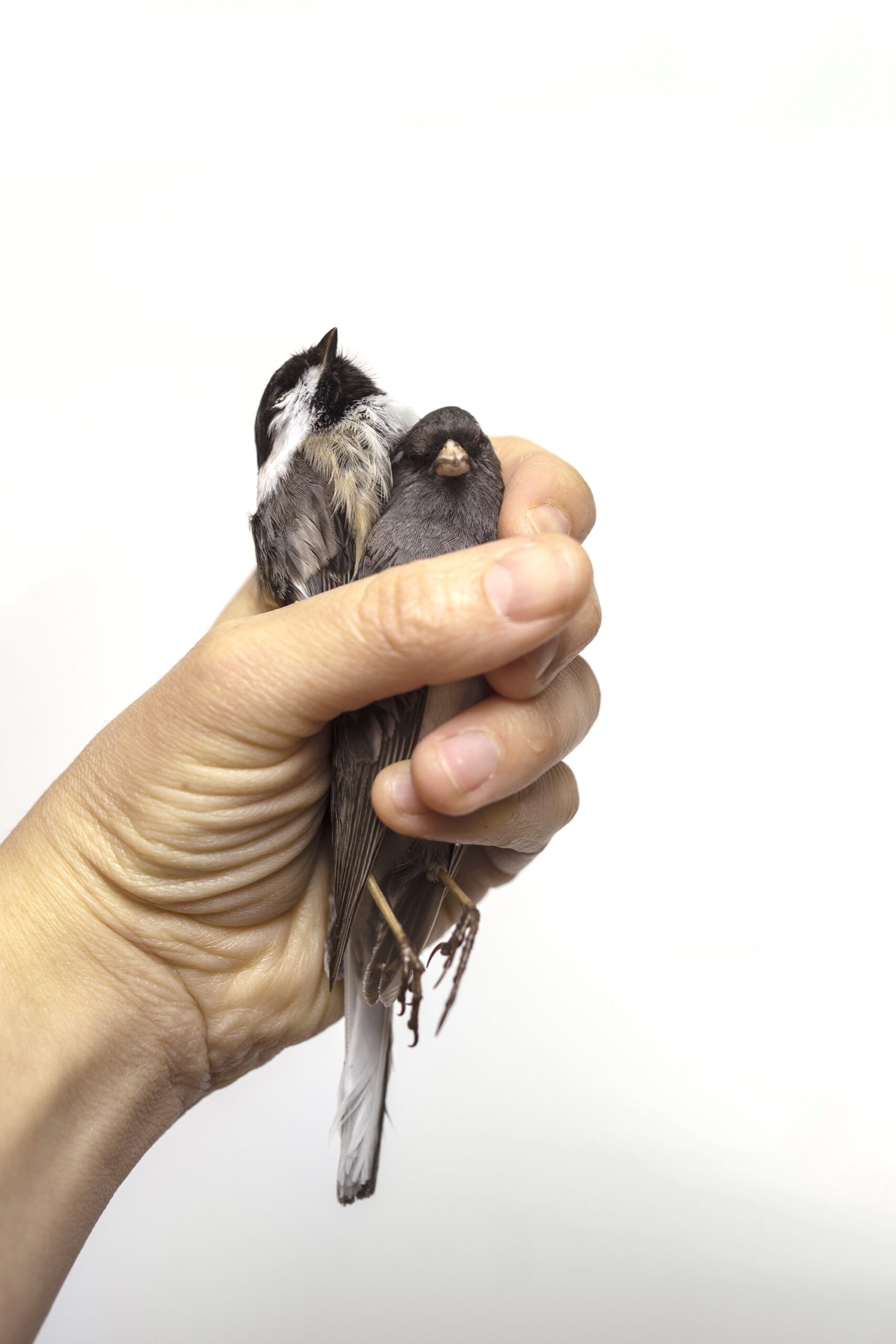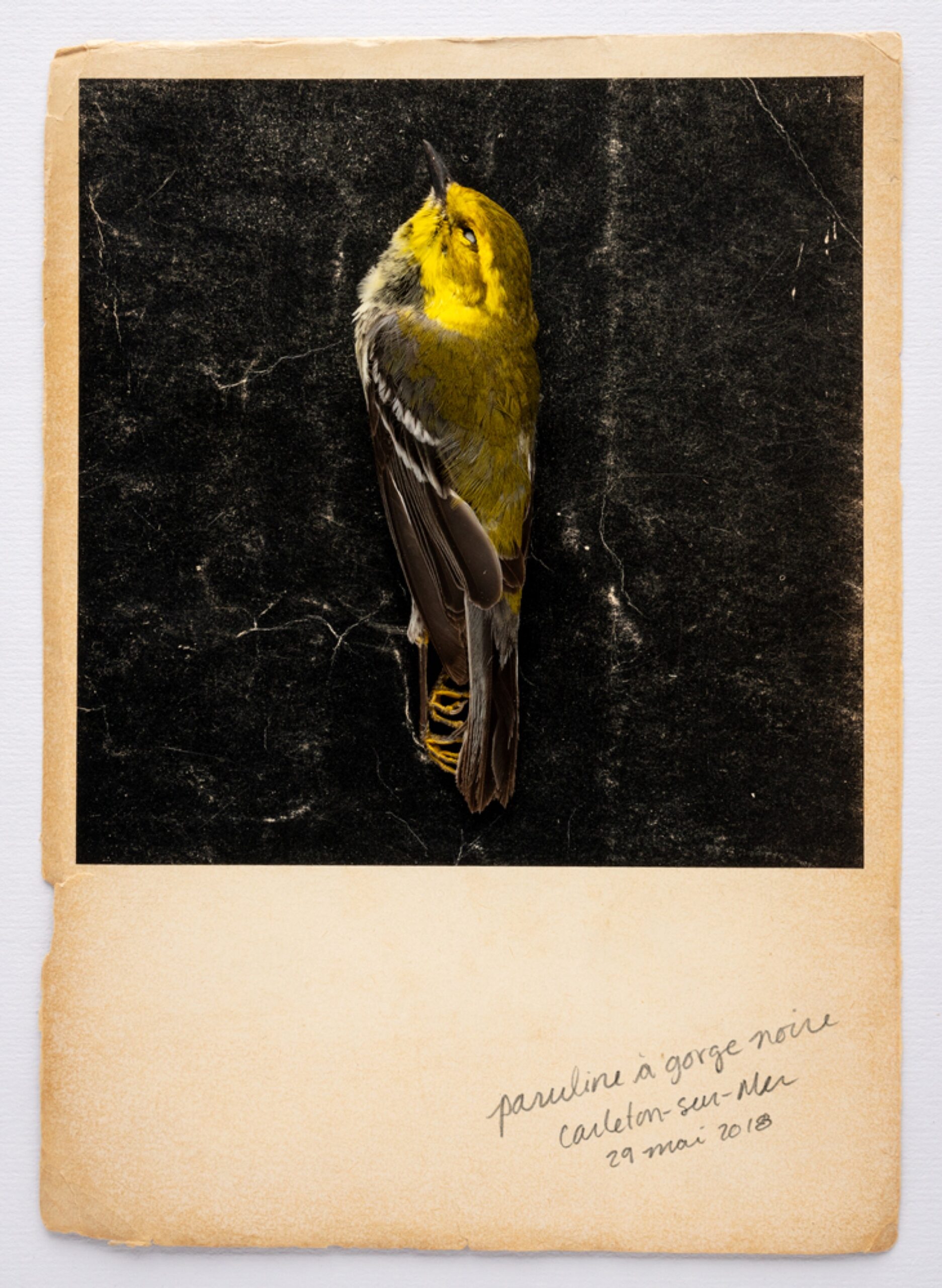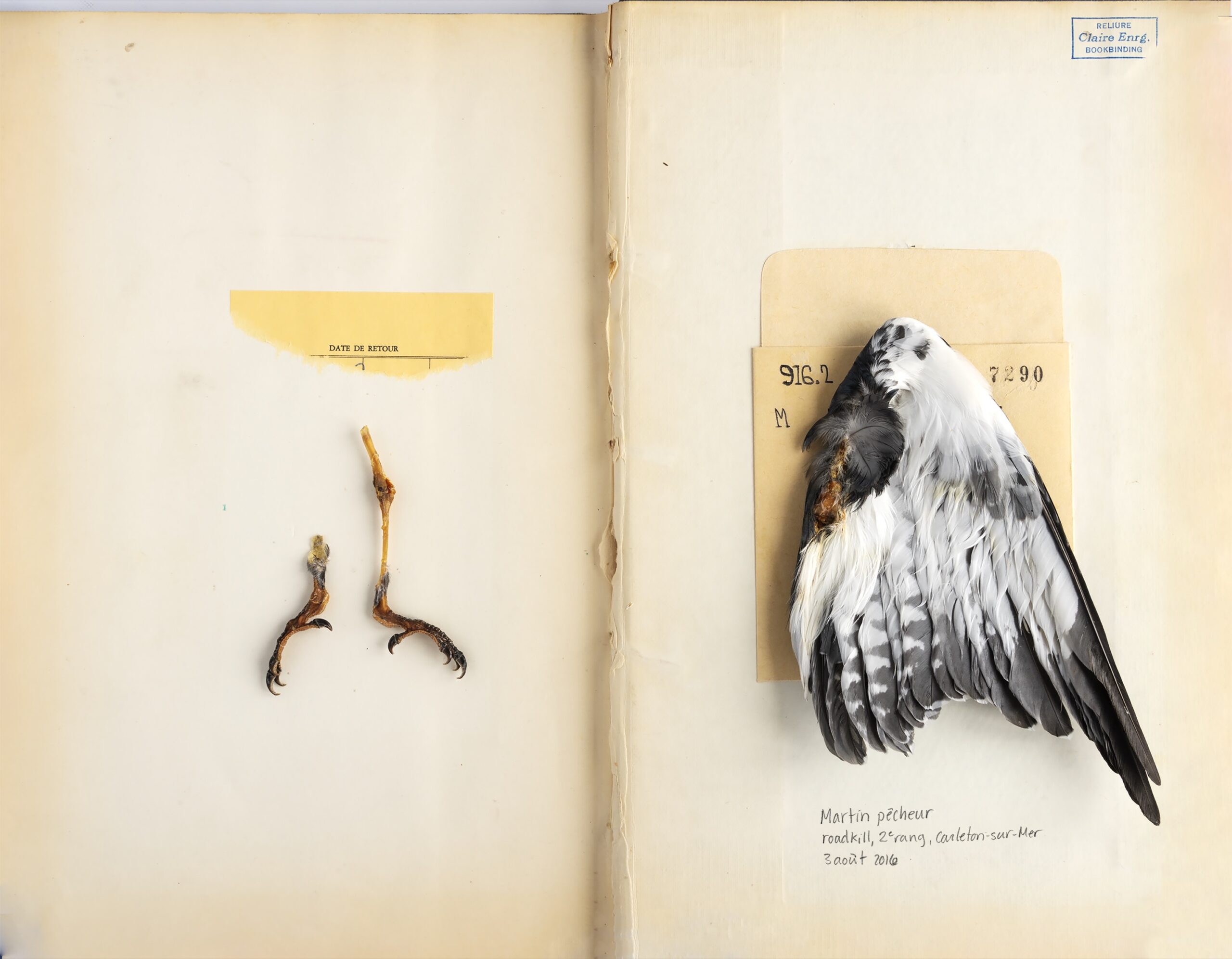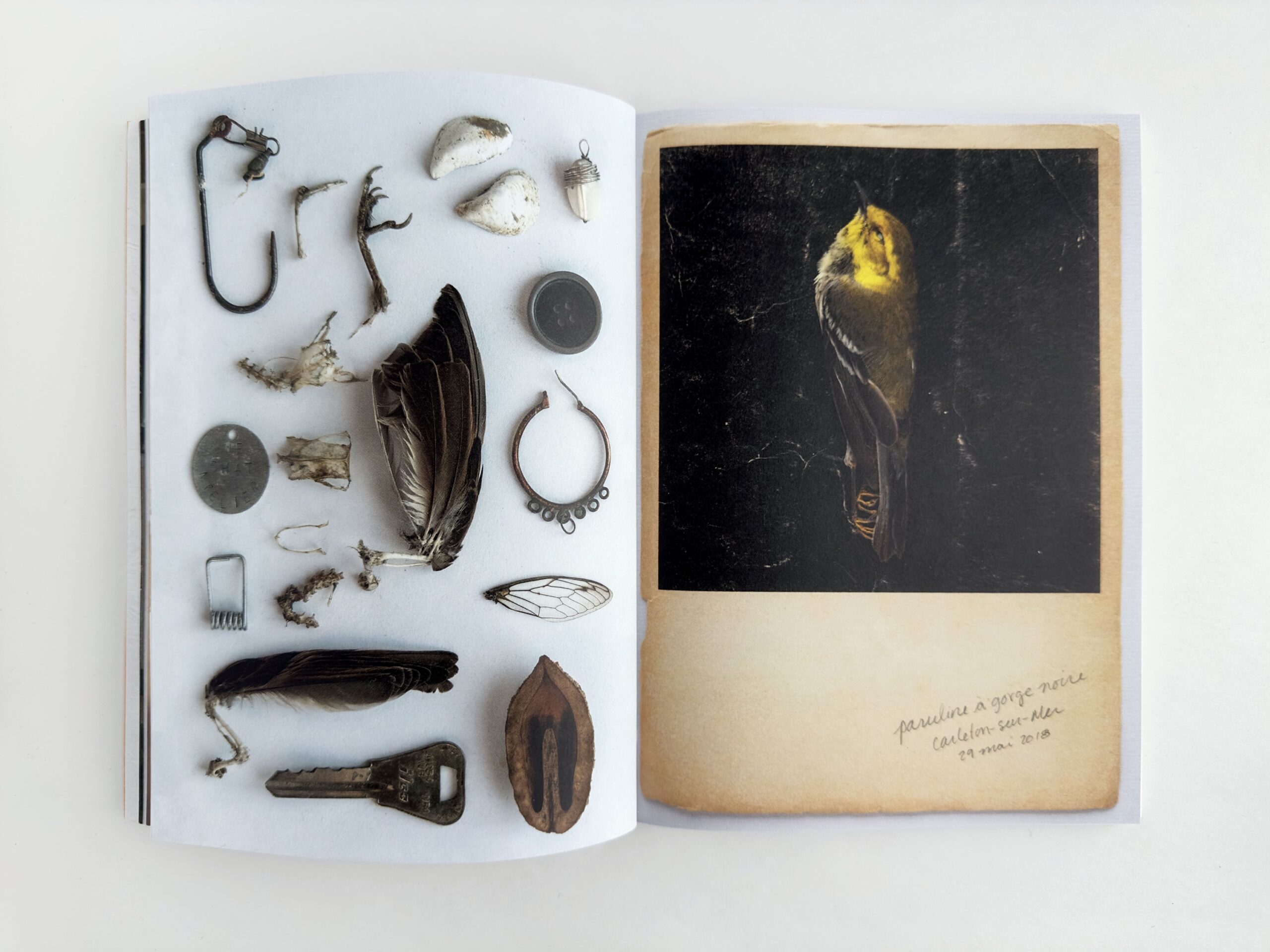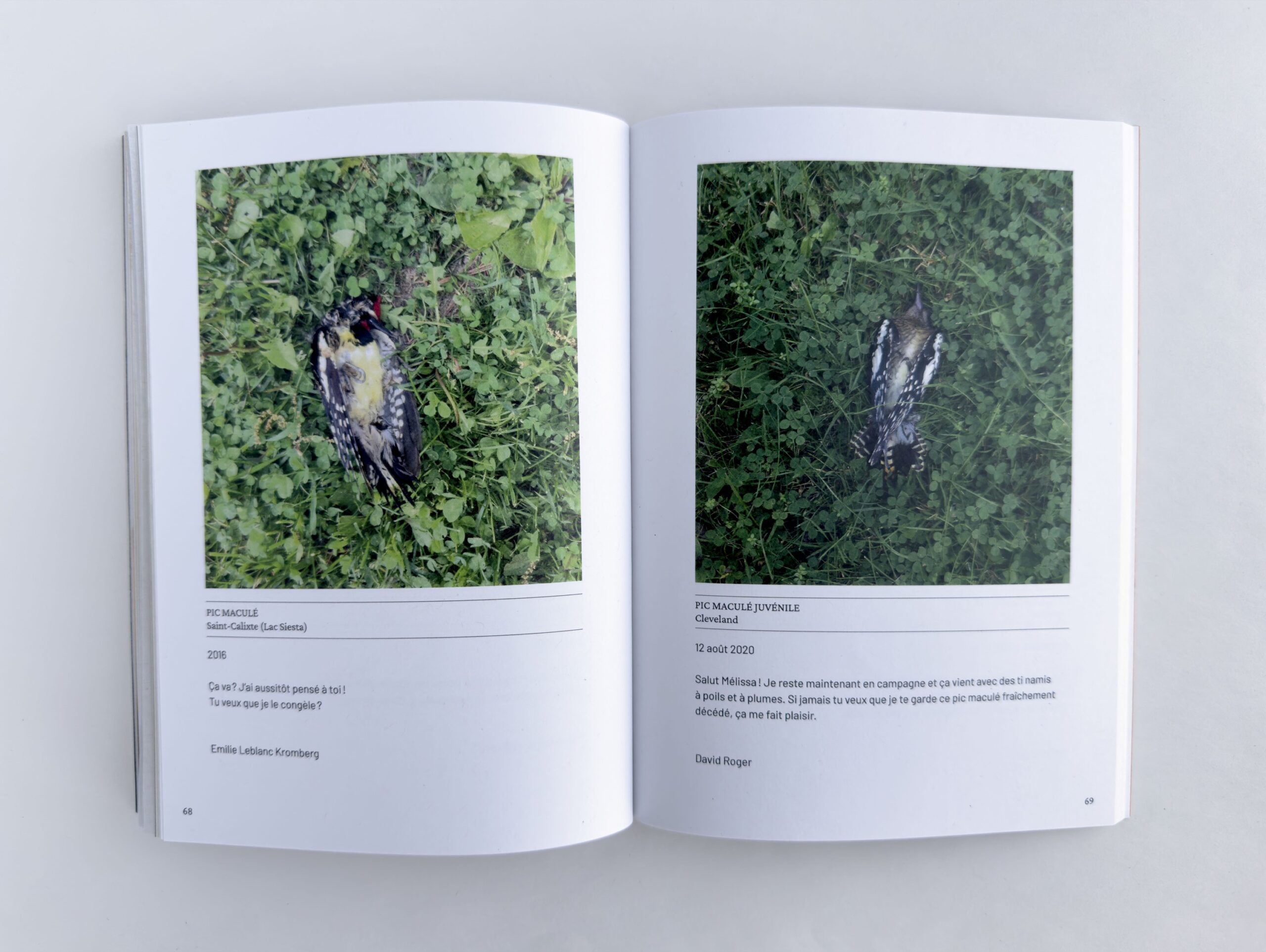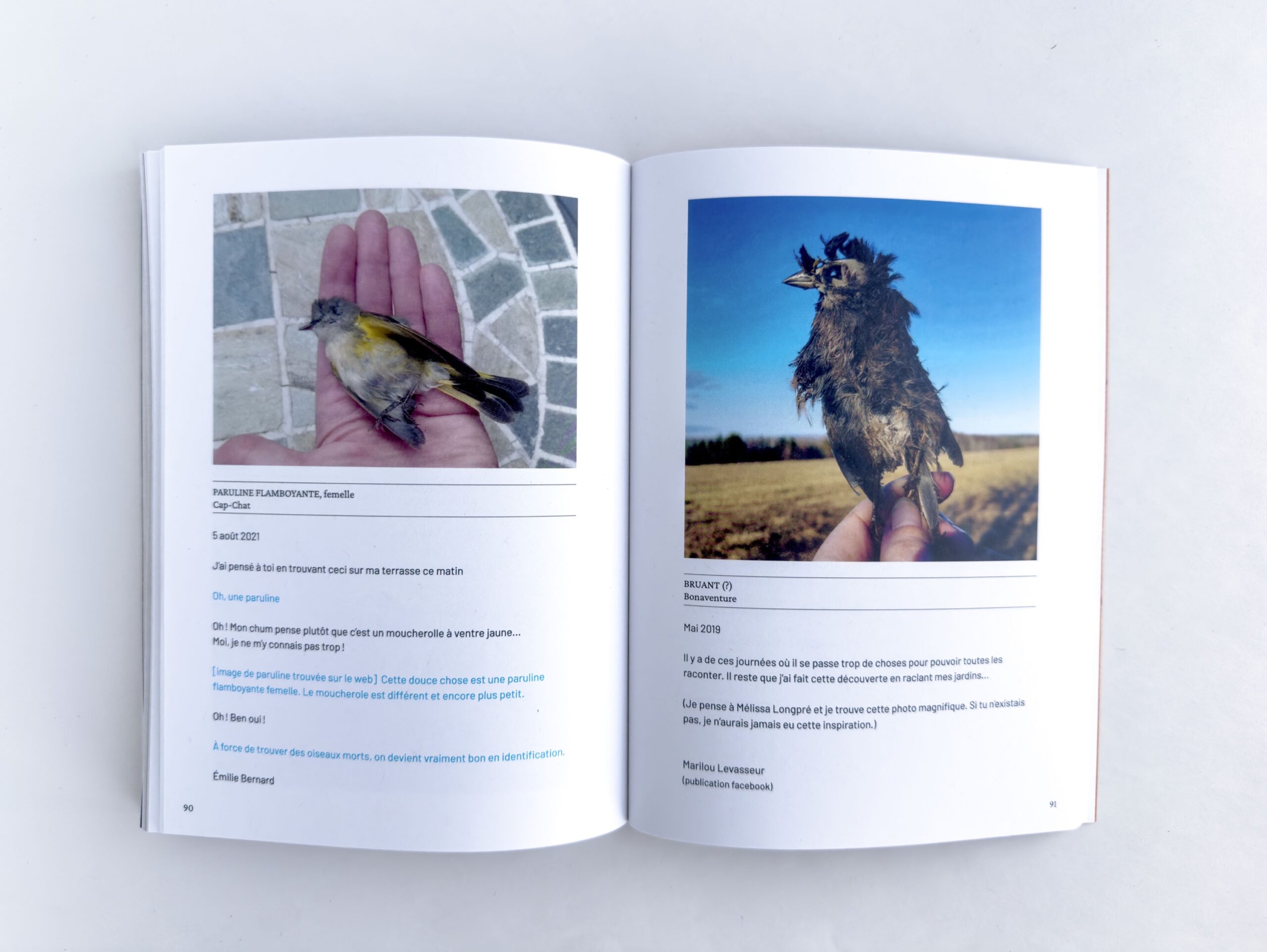[July 3, 2024]
By Marie Perrault
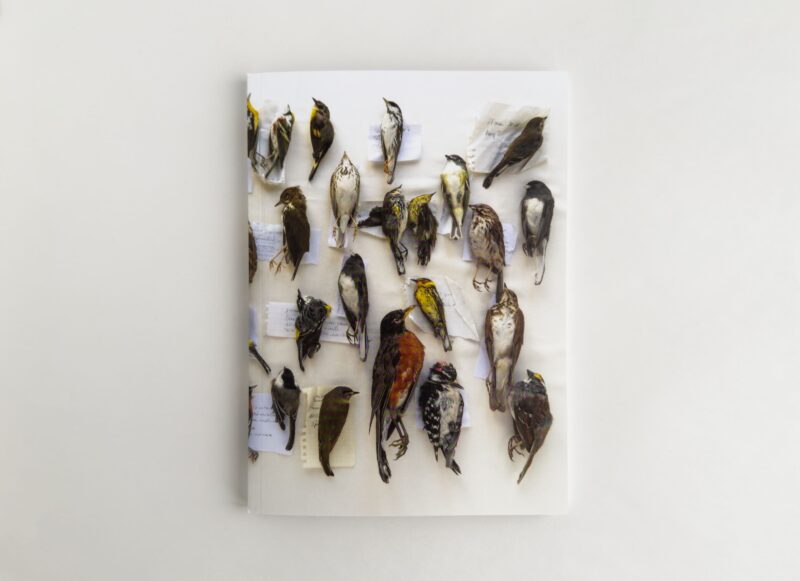
J’ai pensé à toi, une collection d’oiseaux, Mélissa Longpré, Montréal, self-published, 2024, 120 pages, 15 x 21 cm, perfect bound
Mélissa Longpré’s third book, J’ai pensé à toi, is composed of photographs, drawings, and messages involving a collection of birds that she has assembled over the years. The book was created in conjunction with three exhibitions presented by Longpré in Quebec City and Montreal in 2024.
For more than ten years, during her walks in the country and the city, Longpré has collected the carcasses, bones, and feathers of birds that struck windows or were victims of predators. She keeps these remains in the freezer or in the studio, when they are dry and free of flesh, along with other found objects. She carefully photographs this material in compositions inspired by window displays.
In the exhibition at the alley gallery Hangar 7826, the photographs and drawings, as well as how they are grouped in the space, are reminiscent of the arrangement of specimens in a museum. In the immaculate, dynamic photobook, the presentation methods produce a completely different effect. Through its pages a narrative emerges around how one looks at the subjects in private, where they are discovered, their place in the studio, and the mindful attention that Longpré pays to them.
The first part of the book is devoted to how Longpré composes and arranges, draws, and photographs her material. The second part is a compilation of messages that she has received over more than ten years from close friends and family who are aware of her fascination with dead birds, which they now see as an integral part of her. The first words in their missives, “J’ai pensé à toi” (I thought of you), serve as the title both of the photobook and of the exhibitions of this body of work.
Longpré develops a visual narrative from her attraction to the creatures she collects. She presents them as individuals whose lives were rudely interrupted. Far from a statistical enumeration of the decline in the avian population, each bird seems unique and irreplaceable. Her suffering is unburdened in the attention that she pays to juxtaposing the animals and combining them with objects, and to carefully photographing and drawing them. The transcription of an anatomical diagram attests to her scientific curiosity, and the reproduction of a sketch of the layout illustrates the aesthetic research that mobilizes her mourning ritual through art. She invites us into the intimate space of her studio, revealing her creative process, her aesthetic choices and the many small gestures that bring them to life, and their transposition into the photobook.
Longpré’s repeated gestures place us in the situation that she experiences when she finds a specimen in nature. The book therefore gradually reveals photographs of birds found by others; Longpré’s discipline in listing the species name of each individual is extended to recording who found it, where, and when. In this sense, the affection for Longpré and the sharing of her passion extend to those around her. The images sent to her by email, reproduced in the archival section, expand this network beyond borders. The human occupation of the planet is superimposed on birds’ seasonal migration; emerging between the lines is the territory that we share with them and the need to be aware of this in order to limit the decline in their populations and the loss of biodiversity.
Without taking away the tragedy of these lost lives, Longpré prolongs their existence through her unifying gestures of consciousness raising and ensures that these once-living beings that fascinate her will not have died in vain. Translated by Käthe Roth
Born in Carleton-sur-Mer, Mélissa Longpré lives in Montreal and works in various places. She holds a diploma in visual arts and a bachelor’s degree in graphic design from UQAM. Her method is that of a naturalist, with research based on gathering, observation, identification, and documentation. She expresses herself through photography, printmaking, installation, and micro-publishing. Her works have been exhibited in Quebec, including at the Rencontres de la photographie en Gaspésie, and in Norway.
Marie Perrault has been following contemporary issues in the visual and media arts for more than thirty years. She has designed exhibitions and contributes pieces (essays, prefaces, and reviews) to contemporary-art books and magazines. marieperrault.art

